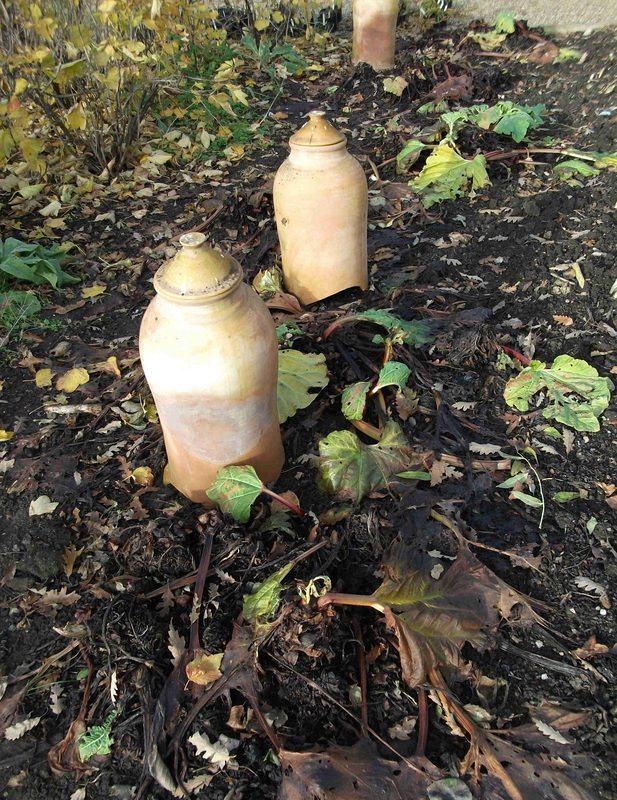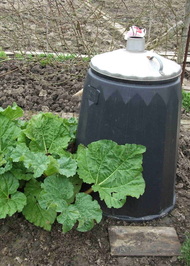As you have no doubt been told a thousand times, Rhubarb is not a fruit but a vegetable. Who cares? It has recently made the transition from boring old granny standby to luxury product. It is no harder to grow than it always was, but you will now find eager takers for any surplus you have!
There are many different varieties of Rhubarb available, as a quick internet search will show. If you are offered a plant by an allotment neighbour who is splitting up a clump, the odds are very strongly that it will be Timperley Early, the commonest variety (and none the worse for that). It is one of the earliest to crop and still a very good choice for the allotment.
"FORCED" RHUBARB
The rhubarb that the foodies rave about is not a particular variety, but rhubarb that has been 'forced' in a particularly extreme way. In the Yorkshire 'rhubarb triangle', the roots are lifted and put into darkened heated sheds, where the stored goodness in the large roots produces blush-pink, delicately tender stems. It's possible to 'force' rhubarb on your allotment without all that palaver. The results won't be quite so exquisite, but they will certainly win over anyone who has had unforced rhubarb and disliked it.
"FORCED" RHUBARB
The rhubarb that the foodies rave about is not a particular variety, but rhubarb that has been 'forced' in a particularly extreme way. In the Yorkshire 'rhubarb triangle', the roots are lifted and put into darkened heated sheds, where the stored goodness in the large roots produces blush-pink, delicately tender stems. It's possible to 'force' rhubarb on your allotment without all that palaver. The results won't be quite so exquisite, but they will certainly win over anyone who has had unforced rhubarb and disliked it.
By excluding light, you prevent the development of coarser flavours. The warm, sheltered surroundings bring on the stems early. Ventilation is important as if the stems get too warm they will rot.
Don't force the same clump year after year - it won't be able to take the strain. If you want to force your rhubarb you will need at least two clumps, so they can take it in turns.
Don't force the same clump year after year - it won't be able to take the strain. If you want to force your rhubarb you will need at least two clumps, so they can take it in turns.
WHY CAN'T I EAT RHUBARB AFTER MIDSUMMER?
The sourness in rhubarb is due to the presence of oxalic acid. This is mild during the cooler weather, but once the temperature starts to rise, so do the levels of oxalic acid. Soon they reach a level where they will make all but the most robust digestive system very unwell indeed.
However, demand from market gardeners has led to the breeding of new, later-cropping varieties which can used be through most of the summer and autumn.
The sourness in rhubarb is due to the presence of oxalic acid. This is mild during the cooler weather, but once the temperature starts to rise, so do the levels of oxalic acid. Soon they reach a level where they will make all but the most robust digestive system very unwell indeed.
However, demand from market gardeners has led to the breeding of new, later-cropping varieties which can used be through most of the summer and autumn.
|
"Valentine" is a maincrop variety, but is less acidic than most and will suit more delicate digestions. Available from Mr Fothergills.
"Cawood Delight" is a late-spring cropping variety, ready from the end of May. It isn't a robst plant and even the RHS says it needs 'good growing conditions'. One to coddle a bit, then. Available from Chris Bowers & sons "Livingstone" is a genuinely autumn-cropping variety, according to the RHS. It continues to produce new stems until the first really cold weather. Available from Thompson & Morgan and Mr Fothergills. Right: rhubarb varieties under trial in the vegetable garden at Wisley |




